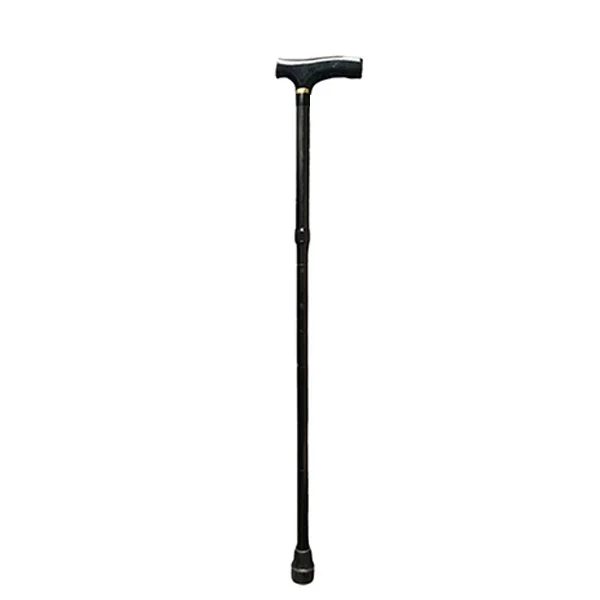Crutches for Disabled People: Guidelines for Selection Based on Disability Type
Time : Aug 29, 2025 View : 1,456
When picking out crutches for individuals with disabilities, it’s vital to choose a type and design that matches their physical needs and recovery aims.

Forearm crutches are great for better movement and work well for people who need them for a long time. On the other hand, underarm crutches are easier to handle and better suited for brief recovery periods. Platform crutches are helpful for those who don’t have much hand strength or struggle with arm coordination. A fantastic choice in this category is the Aluminum Underarm Medical Crutch XY925. It comes with 9 different height settings, rubber pads to prevent slipping, and tube thicknesses ranging from 1.0mm to 1.2mm to fit various body sizes. For anyone looking for extra features, the Foldable Crutch With Seat XY911L offers a built-in seat. This makes it perfect for users who need to take breaks often.
Before we get into how to pair crutch types with specific needs, let me highlight a company that stands out in this field: XUNYU. They have a wide range of mobility tools made from top-notch aluminum materials. Their designs focus on comfort and precision. XUNYU combines fresh ideas with a deep care for patients. Their crutches come with adjustable heights, foldable options, and anti-slip features. These are built not just to help you stand but to feel good and stick with long-term use. Whether you’re healing from an operation or dealing with a lasting condition, XUNYU has solutions made just for you, with strength and smart design at their core.
Matching Crutch Type to Disability Category
Finding the right crutch depends on whether your situation is short-term or ongoing. Picking the wrong one can cause pain or even harm over time.
Temporary Injuries vs. Long-Term Disabilities
For quick recovery needs, like a twisted ankle or limits on putting weight on a leg after surgery, easy handling and adjustable options are key. Tools like the XY-01L are made with a strong aluminum build. They have height settings you can change and a 1.2mm thickness. This keeps them light yet sturdy for short-term users.
However, for lasting disabilities, you need to think about comfort and how weight spreads over time. The XY925 model comes in small, medium, and large sizes. This ensures a good fit, which is super important to avoid extra issues like nerve pain or tired muscles.
Lower Limb Amputations and Post-Surgical Recovery
People healing from losing a limb or after big bone surgeries often need forearm crutches. These give steady support without messing up how you walk. Adjustable types with tough tubes, like those from XUNYU, provide solid help. They also let your elbow bend in a way that feels natural.
Options like the XY911 are especially useful. Their small size and parts you can tweak make them fit changing needs as you heal.
Neurological Disorders Affecting Balance or Coordination
Conditions such as multiple sclerosis or cerebral palsy call for extra steady features. That’s because control over movement can be tricky. For these folks, forearm crutches with wide tips and firm grip areas are a must.
The Foldable Crutch With Seat XY911L has a special foot pad with a honeycomb pattern. This boosts grip on the ground, which is huge for anyone who might lose balance easily. Plus, its foldable style makes it simple to manage when tiredness hits, which often happens with these conditions.
Musculoskeletal Conditions Impacting Upper Body Strength
When arm or shoulder strength is low, like in cases of arthritis or muscle weakness, platform-style crutches are a big help. They spread weight over the forearm instead of just relying on hand power.
Although XUNYU doesn’t list specific platform models on their website, their height-adjustable canes offer a good backup. Take the Cane XY-920 for example. It eases stress on wrists with a comfy height setup and non-slip bottoms.

Biomechanical Considerations in Crutch Selection
Apart from choosing the right type, how well a crutch works matters a lot. It keeps you safe while moving by cutting down stress on joints and helping shift weight smoothly.
Weight Bearing Requirements and Load Distribution
Crutches need to handle either some or no weight on a leg, based on your health needs. Light aluminum frames are often picked for their balance of strength and low weight. You see this in models like the XY-01L. It uses 1.2mm thick tubes for toughness without feeling heavy. Options like the XY925 let you tweak settings across nine levels. This helps spread weight just right, matching your height and walking style.
Joint Stress Minimization and Ergonomic Grips
Comfy grips lower the strain on wrists when you use them for a long time. This is a common worry that can lead to issues like wrist pain. Some advanced crutches have shock-absorbing parts in the handles or foot pads. These soften the impact felt through your arms.
Even if specific shock features aren’t mentioned on product pages, anti-slip rubber pads are common in many models. They help by cutting down the jolt from hard floors or paths as you walk.
Sizing, Adjustment, and Fit Precision
Getting the size right is super important. It affects safety by making sure your posture stays correct while you move.
Measuring for Correct Height and Arm Positioning
The right height setting should let your elbow bend a little, about 15 to 30 degrees, when your hands rest on the grips while standing. Models like the XY925 come in three sizes, small to large. They cover heights from 945mm to 1548mm, fitting many users.
Easy-to-use adjusters, like those in the Cane XY-920, let you change settings fast without tools. This is handy when switching between indoor and outdoor shoes, which can change how your leg length feels.
Importance of Proper Hand Grip Alignment
Hand grips should line up with the crease in your wrist when your arms hang down naturally. If they don’t, it can cause your shoulders to lift or wrists to overstretch. Many XUNYU tools have shaped grips set at the right angles. This helps lessen joint strain over time.
Material Composition and Durability Standards
The stuff crutches are made of plays a big role in how long they last and how well they hold up against things like rust or wear from outdoor use.
Aluminum vs. Carbon Fiber Frames in Clinical Use
Most medical-grade crutches are made from strong aluminum, often used in airplanes. It’s affordable and tough, as seen in products like the XY911L. This model uses frosted aluminum tubes in 19mm and 22mm sizes with 1.2mm thick walls for a great mix of lightness and strength. Carbon fiber is even stronger for its weight, but it costs more. This makes it less common outside of high-end sports recovery.
Rubber pads that stop slipping are standard in most designs, including the XY925. They keep you steady on wet floors or bumpy sidewalks. This is really important for moving around in cities where ground conditions can change a lot during the day.
Enhancing Patient Compliance Through Comfort and Usability
Features that make things comfy are key to making sure people keep using their crutches. Without them, pain or hassle might make someone stop.
Padding, Ventilation, and Pressure Reduction Features
Thick foam padding on grips cuts down on sore spots. Airy materials let air flow better, reducing sweat on hot days. You can find this in items like the Cane XY-920. It comes in finishes like frosted black, which helps let heat escape better than shiny coatings.
Ease of Transport and Storage Considerations
Foldable designs, such as the XY911L, are awesome for travelers or folks in small homes. They shrink down without losing strength. This helps active users stick to using them daily, even with busy lives and mobility struggles.
FAQ
Q: How do I know which size crutch is right for me?
A: Measure from under your arm (or forearm if it’s a Lofstrand style) down to about two inches below your heel while standing straight. Then pick a model with settings in that range. The XY925 works well since it covers small to large sizes.
Q: Can I travel easily with foldable crutches?
A: Yes, for sure! Models like the Foldable Crutch With Seat XY911L fold up fast without any tools. They’re great for buses or plane cabins where space is tight, but you still need something you can count on.
Q: Are there options suitable if I have poor grip strength?
A: Totally! You might find platform-style crutches or comfy canes helpful. The Cane XY-920 has non-slip bottoms and height options made for people with weak hands, like those with arthritis or after a stroke.


